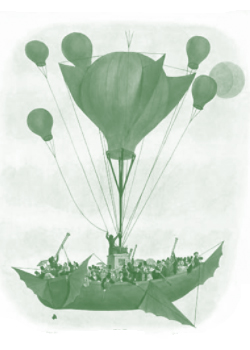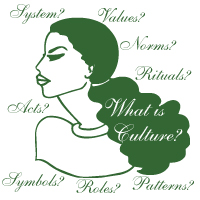|
|
 Cultural Essence
To begin to appreciate the essence of nursing culture, a clear definition of culture is necessary. However, dictionary consultation introduces several viable definitions that could all be applied to nursing culture. For instance, culture is defined as:
- “the act of developing the intellectual and moral faculties especially by education
- enlightenment and excellence of taste acquired by intellectual and aesthetic training
- acquaintance with and taste in fine arts, humanities, and broad aspects of science as distinguished from vocational and technical skills
- the integrated pattern of human knowledge, belief, and behavior that depends upon man's capacity for learning and transmitting knowledge to succeeding generations
- the customary beliefs, social forms, and material traits of a racial, religious, or social group
- the set of shared attitudes, values, goals, and practices that characterizes a company or corporation” (Merriam Webster, 2005).
This tentative list reflects some of the disciplinary definitions of culture, which emerge from the varied notions of how culture is conceptualized: whether through mental/affective learning; artistic and aesthetics development; socialization or acculturation; patterns; worldview, or symbolic acts. Various disciplines use one or more of these lens to define and examine culture and its meaning to human development, action, and ways of being. “Culture is partly defined as a circuit of power, ideologies, and values in which diverse images and sounds are produced and circulated, identities are constructed, inhabited, and discarded, agency is manifested in both individualized and social forms, and discourses are created, which make culture itself the object of inquiry and critical analyses. Rather than being viewed as a static force, the substance of culture and everyday life – knowledge, goods, social practices, and contexts – repeatedly mutates and is subject to ongoing changes and interpretations” (Giroux, 2004, p. 60).
 It is evident then, that nursing culture can be looked at in a number of different ways. Nurse-anthropologist, Margaret Leininger described nursing culture as “the learned and transmitted lifeways, values, symbols, patterns, and normative practices of members of the nursing profession of a particular society. A subculture of nursing refers to a subgroup of nurses who show distinctive values and lifeways that differ from the dominant or mainstream culture of nursing” (1994, p. 19). Leininger (1994) went further to distinguish both ideal and manifest attributes of culture, by defining an ideal culture as one that reflects the “...attributes that are most desired, preferred, or the wished for values and norms of the group” while manifest culture is “...what actually exists and is identifiable in the day-to-day world as patterns, values, lifestyle patterns, and expressions” (p. 19). It is evident then, that nursing culture can be looked at in a number of different ways. Nurse-anthropologist, Margaret Leininger described nursing culture as “the learned and transmitted lifeways, values, symbols, patterns, and normative practices of members of the nursing profession of a particular society. A subculture of nursing refers to a subgroup of nurses who show distinctive values and lifeways that differ from the dominant or mainstream culture of nursing” (1994, p. 19). Leininger (1994) went further to distinguish both ideal and manifest attributes of culture, by defining an ideal culture as one that reflects the “...attributes that are most desired, preferred, or the wished for values and norms of the group” while manifest culture is “...what actually exists and is identifiable in the day-to-day world as patterns, values, lifestyle patterns, and expressions” (p. 19).
Anthropological Notions of Culture
 The field of anthropology has a long well-researched history of viewing culture as its central tenet of study. The definitions and theories related to culture are profuse and diverse. A basic tenet of culture in the eyes of anthropology is that it is learned, reveals strong patterning, and represents an integrated whole (Archer, 1996). Anthropological theories of culture began with the study of various geographically defined categories of ethnic cultures and races, developing into what is currently known as cross-cultural anthropology. This cultural focus on race and ethnicity is critically important to nurses in at least two contexts: nurses work intimately with clients and other health care professionals with a diverse multicultural background; and (at least in Western society), most nurses (a conservatively estimated 80 per cent) are white. Both of these points will be integrated into subsequent sections of this analysis. The field of anthropology has a long well-researched history of viewing culture as its central tenet of study. The definitions and theories related to culture are profuse and diverse. A basic tenet of culture in the eyes of anthropology is that it is learned, reveals strong patterning, and represents an integrated whole (Archer, 1996). Anthropological theories of culture began with the study of various geographically defined categories of ethnic cultures and races, developing into what is currently known as cross-cultural anthropology. This cultural focus on race and ethnicity is critically important to nurses in at least two contexts: nurses work intimately with clients and other health care professionals with a diverse multicultural background; and (at least in Western society), most nurses (a conservatively estimated 80 per cent) are white. Both of these points will be integrated into subsequent sections of this analysis.
Cross-cultural anthropology is not the only branch of anthropology that is relevant to nursing, however. Clifford Geertz, a key traditional researcher of symbolic anthropology, devoted years to study the role of thought or symbols that guide human action. He felt humans express culture in symbolic forms to communicate with others and to develop their own knowledge and values/attitudes about the world around them. Culture imposed meaning on the world, it made it understandable through semiotic means. “Believing, with Max Weber, that man is an animal suspended in webs of significance he himself has spun, I take culture to be those webs” (1973, p. 4). Geertz elaborated that culture is a pattern of meanings that is historically transmitted to its members, is embodied in symbols, and manifests as a system of inherited/transmitted conceptions. Nursing scholar Patricia Benner applied Geertz's cultural views to the context of nursing: to Benner, meanings are not individualized and private, but rather public and shared, and ultimately, grounded in culture (1994). These cultural meanings, including linguistic expressions create what is noticed, and are inscribed on the body: symbols act as vehicles of culture. Geertz's webs of significance has meaning to the act of nursing by drawing attention to the beliefs and practices, cultural customs, social interactions, attitudes, behaviours, myths, rituals, and material constructions embodied by its members within a practice context.
A group of contemporary cultural anthropologists, Beals, Hoijer and Beals (1977) identified five major components of any cultural system within society:
- a group or society consisting of a set of members
- an environment or context where the members carry on characteristic activities
- a material culture consisting of the equipment and artefacts used by the members
- a cultural tradition that represents the historically accumulated decisions of the members
- the human activities, rituals, and behaviours emerging out of complex interactions among the members, the environment, the material culture and the cultural tradition.
 Holland (1993) examined nursing culture using Beals' description with a particular eye for ritualistic expression. Patterned symbolic action ritual occurred in response to the goals and values of nursing but also of the hospital context. Two examples described at length included the nursing shift change report and the wearing of uniforms. Within the surrounding organizational culture of the hospital (and even wider culture of the health care system in general) nurses act and ritually function and perform to provide care for assigned patients. “The organization of the hospital and its management still retain the power to confirm and organize the overall content of the nurse's and patient's days” (p. 1468). The rituals of caring for and healing the sick “takes place in 'ritual time' and 'ritual space' " (p. 1468). Holland (1993) examined nursing culture using Beals' description with a particular eye for ritualistic expression. Patterned symbolic action ritual occurred in response to the goals and values of nursing but also of the hospital context. Two examples described at length included the nursing shift change report and the wearing of uniforms. Within the surrounding organizational culture of the hospital (and even wider culture of the health care system in general) nurses act and ritually function and perform to provide care for assigned patients. “The organization of the hospital and its management still retain the power to confirm and organize the overall content of the nurse's and patient's days” (p. 1468). The rituals of caring for and healing the sick “takes place in 'ritual time' and 'ritual space' " (p. 1468).
Cultural anthropologist, Edward Hall (1989) examined how culture influences perceptions of time. He pointed out that most of Western culture operates according to monochronic time (M time) systems which entail schedules, promptness, and perform actions linearly. Contrary to M time, other (usually non-Western) cultures function using polychronic (P time) time systems where several actions  or events occur all at once, with an emphasis on the interactions and relatedness amongst the actors involved, in a flexible, non-linear way. An emphasis on M time is blatantly apparent in most Western health care settings, which obviously influences the way nursing culture is performed and how patient care is organized. Although many expert nurses are proficient in multitasking as they juggle care components for their varied assigned clients, there is little time or room for flexible care based on the client's altered sense of time or their unique needs. This fact supports the systemic agenda of the organizational milieu where care tasks are attended to, but misses the point as far as engaging in true holistic, client-centered care. or events occur all at once, with an emphasis on the interactions and relatedness amongst the actors involved, in a flexible, non-linear way. An emphasis on M time is blatantly apparent in most Western health care settings, which obviously influences the way nursing culture is performed and how patient care is organized. Although many expert nurses are proficient in multitasking as they juggle care components for their varied assigned clients, there is little time or room for flexible care based on the client's altered sense of time or their unique needs. This fact supports the systemic agenda of the organizational milieu where care tasks are attended to, but misses the point as far as engaging in true holistic, client-centered care.
Cultural Psychology Notions of Culture
 Psychology is another traditional discipline that has included culture as a variable of study, especially related to cognitive development as well as the individual and collective psyche. A particularly poignant version of culture as seen through the lens of contemporary cultural psychology is the articulation of agency in culture. This view describes people as participatory players who actively make and remake culture: they are creators, not passive recipients or 'victims' of culture. (Ratner, 2000). Rather, people choose on a moment-by-moment basis, whether to embrace or reject cultural suggestion and expectations from their surrounding world. “Co-construction grants primacy to the individual's decision about how to deal with culture...most of human development takes place through active ignoring and neutralization of most of the social suggestions to which the person is subjected in everyday life” (Valsiner, 1998, p. 393). Psychology is another traditional discipline that has included culture as a variable of study, especially related to cognitive development as well as the individual and collective psyche. A particularly poignant version of culture as seen through the lens of contemporary cultural psychology is the articulation of agency in culture. This view describes people as participatory players who actively make and remake culture: they are creators, not passive recipients or 'victims' of culture. (Ratner, 2000). Rather, people choose on a moment-by-moment basis, whether to embrace or reject cultural suggestion and expectations from their surrounding world. “Co-construction grants primacy to the individual's decision about how to deal with culture...most of human development takes place through active ignoring and neutralization of most of the social suggestions to which the person is subjected in everyday life” (Valsiner, 1998, p. 393).
Jerome Bruner (1982) elaborated by describing culture as symbolic meanings that are interpersonally negotiated through linguistic discourse. Like Geertz, he studied semiotic symbols but from a psychological perspective; a semiotic negotiation of meanings is the way agency actively constructs culture. People became cultural agents by the negotiation of meaning as one expressed their opinions and notions of cultural things to others. “It is the forum aspect of a culture (in which meanings are negotiated and renegotiated) that gives the participants a role in constantly making and remaking the culture – their active role as participants rather than as performing spectators who play out canonical roles according to rule when the appropriate cues occur” (p. 839).
On the other hand, Pierre Bourdieu (2000) presented the concept of habitus to describe intentional action by agency that is socially situated and often, contained. Habitus was described as a set of culturally related expectations, assumptions, and dispositions to react: these develop over time and within space through particular forms of social experiences and conditions. This notion purports that human action is not freely constructed through individual agency, but rather is guided by the socially built-up habitus. “Social experience is not only internalized intellectually; it becomes inscribed in our bodies. Personal experiences do not transcend normative cultural patterns. They are minor variations within patterns” (Ratner, 2000, p. 423).
This notion of culture stresses the fact that in contemporary capitalist society, the agency of most people is limited and almost always personally focused on the decisions and interactions of normal everyday life. “The agency of most people does not control the manner in which social activities such as work, religion, education, government, and medical care are socially organized” (Ratner, 2000, p. 425). This common focus on personally related tasks creates a specific form of agency that is “historically situated” and “culturally specific”(p. 426). Since agency has a social essence that acts within social relations, individual agency is constrained in most people: it only becomes empowered, fulfilled or even creative within social relations that allow this within the cultural boundaries that have been historically situated and currently supported.
Cultural Studies Notions of Culture
 Simon During (2005), a devoted researcher in cultural studies, looked at how culture is engaged in contemporary every-day life, including work life. During defined culture as “....not a thing or even a system: its a set of transactions, processes, mutations, practices, technologies, institutions, out of which things and events are produced, to be experienced, lived out, and given meaning and value to in different ways within the unsystematic network of differences and mutations from which they emerged to start with” (p. 6). Simon During (2005), a devoted researcher in cultural studies, looked at how culture is engaged in contemporary every-day life, including work life. During defined culture as “....not a thing or even a system: its a set of transactions, processes, mutations, practices, technologies, institutions, out of which things and events are produced, to be experienced, lived out, and given meaning and value to in different ways within the unsystematic network of differences and mutations from which they emerged to start with” (p. 6).
Within cultural studies, cultural objects are also 'texts' that have meaning, as well as experiences and events (During, 2005). Avoiding objectification yet encouraging self-reflection, culture is engaged in, as well as a 'field of power-relations involving centres and peripheries, status hierarchies, connections to norms that impose repressions or marginalizations” (p. 9).
Postcolonialist Notions of Culture
 Closely aligned to During's description of cultural studies, postcolonialism looks at the way white cultural privilege influences people, everyday life (including work), as well as health and illness experiences. The notion of the culture of whiteness stems from the historical European colonization of much of the world's peoples, who were viewed as “Other” or non-white. Not only were they viewed as different, but also as deviant; as 'not normal”. White was/is “normal”. This notion made it easier to rationalize the atrocious acts of marginalization, assimilation, and even genocide purported in the name of cultivation of the “best” from civilization. Closely aligned to During's description of cultural studies, postcolonialism looks at the way white cultural privilege influences people, everyday life (including work), as well as health and illness experiences. The notion of the culture of whiteness stems from the historical European colonization of much of the world's peoples, who were viewed as “Other” or non-white. Not only were they viewed as different, but also as deviant; as 'not normal”. White was/is “normal”. This notion made it easier to rationalize the atrocious acts of marginalization, assimilation, and even genocide purported in the name of cultivation of the “best” from civilization.
A postcolonialist lens can reveal some realistic problems in nursing culture, since “over 80 per cent of registered nurses are white, some statistics show as many as 90 per cent and more in some countries” (Health Resources Service Administration, 2000). The notion of whiteness also includes 'acting white' which is “required for full assimilation in the nursing establishment on the part of students, faculty, and clinical nurses. Acting white means adhering to the behaviours, values, beliefs, and practices of the dominant white culture” (Puzan, 2000, p. 195).
 Postcolonialism offers a critical lens that helps nurse to view experiences of marginalization within the practice context as well as power and historical/structural dynamics (Reimer-Kirkham & Anderson, 2002). A look at geographical culturalism or multiculturalism reveals a tendency to exoticize ethnic culture, to disenfranchise, to stereotype, and further the notion of culture as 'difference' and othering; while white culture remains “transparent and unspoken for the most part, positioned as normal” (p. 6). This lens positions culture as individual and collective human experience situated within the larger 'contexts of mediating social, economic, political, and historical forces” (p. 13). Postcolonialism offers a critical lens that helps nurse to view experiences of marginalization within the practice context as well as power and historical/structural dynamics (Reimer-Kirkham & Anderson, 2002). A look at geographical culturalism or multiculturalism reveals a tendency to exoticize ethnic culture, to disenfranchise, to stereotype, and further the notion of culture as 'difference' and othering; while white culture remains “transparent and unspoken for the most part, positioned as normal” (p. 6). This lens positions culture as individual and collective human experience situated within the larger 'contexts of mediating social, economic, political, and historical forces” (p. 13).
Postmodern Notions of Culture
A postmodern lens contextualizes nursing culture as both an activity and discipline-based, and analyzes how societal and cultural changes have shaped the culture of nursing. Parallels can be drawn between current societal discourses and the cultural discourses in nursing. Recent disciplinary development in nursing as been described as modernist, especially within the enterprise-based, health care system. This particular lens provides a strong focus on power, and an analysis of “the plural, fragmentary, and subjective nature of reality and self” (Lister, 1997, p. 41) Nursing culture emerges from “dispersed, adaptable, and relational positions of power through close connections with families and communities” and with other health care providers (Puzan, 2000, 194).
Foucault sought to identify, investigate, and expose those contemporary cultural practices and rituals that threatened equality. He analyzed discourses in language to uncover the relationship between power, knowledge, and subjectivity. (Arslanian-Engoren, 2002). Discourses frame the material practice of everyday work, giving it meaning and providing a way of conceptualizing professional relations, aspirations, and achievements. Such strategic language provides a means of connecting the professional identity, knowledge, and power of nursing and other health care professionals. “For Foucault, knowledge is power over others, the power to define others. The value of narratives, of professional depictions of self at whatever level, is that these act as cultural resources to convey the virtues of professional acts” (May & Fleming, 1997, p. 1099).
 Holmes and Gastaldo (2004) presented a metaphor for postmodern self-examination in nursing, using the notion of Rhizomatic Thought in contrast to traditional linear discourse or “Arborescence”. They explained that the rhizome is open at both ends, and does not conform to historical linear thinking. Rather, it emerges and grows in simultaneous, multiple ways and represents the ideal cultural essence of nursing since all life is a process of assemblages, connections and interactions. Rhizomatic thought is postmodern in essence, and acknowledges, accepts and promotes multiple discourses within nursing, even if they compete with one another. It embodies in a particular type of discourse that challenges the status quo and regimes of truth that are taken for granted within the health care context, promotes alternative discourses and suggests paths toward “lines of flight” (resistance). Characterized by freedom, movement, and flux that serves to deconstruct historical nursing dogma, rhizomatic thought and discourse provides a means for nurses to examine their own mode of cultural being and governmentality within the current health care system and the wider context of society at large. Holmes and Gastaldo (2004) presented a metaphor for postmodern self-examination in nursing, using the notion of Rhizomatic Thought in contrast to traditional linear discourse or “Arborescence”. They explained that the rhizome is open at both ends, and does not conform to historical linear thinking. Rather, it emerges and grows in simultaneous, multiple ways and represents the ideal cultural essence of nursing since all life is a process of assemblages, connections and interactions. Rhizomatic thought is postmodern in essence, and acknowledges, accepts and promotes multiple discourses within nursing, even if they compete with one another. It embodies in a particular type of discourse that challenges the status quo and regimes of truth that are taken for granted within the health care context, promotes alternative discourses and suggests paths toward “lines of flight” (resistance). Characterized by freedom, movement, and flux that serves to deconstruct historical nursing dogma, rhizomatic thought and discourse provides a means for nurses to examine their own mode of cultural being and governmentality within the current health care system and the wider context of society at large.
This brief introduction to disciplinary cultural definers of nursing provides some cursory background and insight to the way nursing culture can be conceptualized – this analysis is by no means exhaustive. Each of the disciplines introduced is rich with other cultural definitions and possibilities. As well, many other disciplines offer alternate explanations. To further apply conceptual understandings of nursing culture in a meaningful way, it is useful to deconstruct the focus into arbitrary subtopics. It seems most practical to begin at the beginning – by looking at how individuals become actual members of nursing culture through the institutionalized nursing education system and process.
|
|
|
|

|




 It is evident then, that nursing culture can be looked at in a number of different ways. Nurse-anthropologist, Margaret Leininger described nursing culture as “the learned and transmitted lifeways, values, symbols, patterns, and normative practices of members of the nursing profession of a particular society. A subculture of nursing refers to a subgroup of nurses who show distinctive values and lifeways that differ from the dominant or mainstream culture of nursing” (1994, p. 19). Leininger (1994) went further to distinguish both ideal and manifest attributes of culture, by defining an ideal culture as one that reflects the “...attributes that are most desired, preferred, or the wished for values and norms of the group” while manifest culture is “...what actually exists and is identifiable in the day-to-day world as patterns, values, lifestyle patterns, and expressions” (p. 19).
It is evident then, that nursing culture can be looked at in a number of different ways. Nurse-anthropologist, Margaret Leininger described nursing culture as “the learned and transmitted lifeways, values, symbols, patterns, and normative practices of members of the nursing profession of a particular society. A subculture of nursing refers to a subgroup of nurses who show distinctive values and lifeways that differ from the dominant or mainstream culture of nursing” (1994, p. 19). Leininger (1994) went further to distinguish both ideal and manifest attributes of culture, by defining an ideal culture as one that reflects the “...attributes that are most desired, preferred, or the wished for values and norms of the group” while manifest culture is “...what actually exists and is identifiable in the day-to-day world as patterns, values, lifestyle patterns, and expressions” (p. 19).  The field of anthropology has a long well-researched history of viewing culture as its central tenet of study. The definitions and theories related to culture are profuse and diverse. A basic tenet of culture in the eyes of anthropology is that it is learned, reveals strong patterning, and represents an integrated whole (Archer, 1996). Anthropological theories of culture began with the study of various geographically defined categories of ethnic cultures and races, developing into what is currently known as cross-cultural anthropology. This cultural focus on race and ethnicity is critically important to nurses in at least two contexts: nurses work intimately with clients and other health care professionals with a diverse multicultural background; and (at least in Western society), most nurses (a conservatively estimated 80 per cent) are white. Both of these points will be integrated into subsequent sections of this analysis.
The field of anthropology has a long well-researched history of viewing culture as its central tenet of study. The definitions and theories related to culture are profuse and diverse. A basic tenet of culture in the eyes of anthropology is that it is learned, reveals strong patterning, and represents an integrated whole (Archer, 1996). Anthropological theories of culture began with the study of various geographically defined categories of ethnic cultures and races, developing into what is currently known as cross-cultural anthropology. This cultural focus on race and ethnicity is critically important to nurses in at least two contexts: nurses work intimately with clients and other health care professionals with a diverse multicultural background; and (at least in Western society), most nurses (a conservatively estimated 80 per cent) are white. Both of these points will be integrated into subsequent sections of this analysis.  Holland (1993) examined nursing culture using Beals' description with a particular eye for ritualistic expression. Patterned symbolic action ritual occurred in response to the goals and values of nursing but also of the hospital context. Two examples described at length included the nursing shift change report and the wearing of uniforms. Within the surrounding organizational culture of the hospital (and even wider culture of the health care system in general) nurses act and ritually function and perform to provide care for assigned patients. “The organization of the hospital and its management still retain the power to confirm and organize the overall content of the nurse's and patient's days” (p. 1468). The rituals of caring for and healing the sick “takes place in 'ritual time' and 'ritual space' " (p. 1468).
Holland (1993) examined nursing culture using Beals' description with a particular eye for ritualistic expression. Patterned symbolic action ritual occurred in response to the goals and values of nursing but also of the hospital context. Two examples described at length included the nursing shift change report and the wearing of uniforms. Within the surrounding organizational culture of the hospital (and even wider culture of the health care system in general) nurses act and ritually function and perform to provide care for assigned patients. “The organization of the hospital and its management still retain the power to confirm and organize the overall content of the nurse's and patient's days” (p. 1468). The rituals of caring for and healing the sick “takes place in 'ritual time' and 'ritual space' " (p. 1468).  or events occur all at once, with an emphasis on the interactions and relatedness amongst the actors involved, in a flexible, non-linear way. An emphasis on M time is blatantly apparent in most Western health care settings, which obviously influences the way nursing culture is performed and how patient care is organized. Although many expert nurses are proficient in multitasking as they juggle care components for their varied assigned clients, there is little time or room for flexible care based on the client's altered sense of time or their unique needs. This fact supports the systemic agenda of the organizational milieu where care tasks are attended to, but misses the point as far as engaging in true holistic, client-centered care.
or events occur all at once, with an emphasis on the interactions and relatedness amongst the actors involved, in a flexible, non-linear way. An emphasis on M time is blatantly apparent in most Western health care settings, which obviously influences the way nursing culture is performed and how patient care is organized. Although many expert nurses are proficient in multitasking as they juggle care components for their varied assigned clients, there is little time or room for flexible care based on the client's altered sense of time or their unique needs. This fact supports the systemic agenda of the organizational milieu where care tasks are attended to, but misses the point as far as engaging in true holistic, client-centered care.
 Psychology is another traditional discipline that has included culture as a variable of study, especially related to cognitive development as well as the individual and collective psyche. A particularly poignant version of culture as seen through the lens of contemporary cultural psychology is the articulation of agency in culture. This view describes people as participatory players who actively make and remake culture: they are creators, not passive recipients or 'victims' of culture. (Ratner, 2000). Rather, people choose on a moment-by-moment basis, whether to embrace or reject cultural suggestion and expectations from their surrounding world. “Co-construction grants primacy to the individual's decision about how to deal with culture...most of human development takes place through active ignoring and neutralization of most of the social suggestions to which the person is subjected in everyday life” (Valsiner, 1998, p. 393).
Psychology is another traditional discipline that has included culture as a variable of study, especially related to cognitive development as well as the individual and collective psyche. A particularly poignant version of culture as seen through the lens of contemporary cultural psychology is the articulation of agency in culture. This view describes people as participatory players who actively make and remake culture: they are creators, not passive recipients or 'victims' of culture. (Ratner, 2000). Rather, people choose on a moment-by-moment basis, whether to embrace or reject cultural suggestion and expectations from their surrounding world. “Co-construction grants primacy to the individual's decision about how to deal with culture...most of human development takes place through active ignoring and neutralization of most of the social suggestions to which the person is subjected in everyday life” (Valsiner, 1998, p. 393).
 Simon During (2005), a devoted researcher in cultural studies, looked at how culture is engaged in contemporary every-day life, including work life. During defined culture as “....not a thing or even a system: its a set of transactions, processes, mutations, practices, technologies, institutions, out of which things and events are produced, to be experienced, lived out, and given meaning and value to in different ways within the unsystematic network of differences and mutations from which they emerged to start with” (p. 6).
Simon During (2005), a devoted researcher in cultural studies, looked at how culture is engaged in contemporary every-day life, including work life. During defined culture as “....not a thing or even a system: its a set of transactions, processes, mutations, practices, technologies, institutions, out of which things and events are produced, to be experienced, lived out, and given meaning and value to in different ways within the unsystematic network of differences and mutations from which they emerged to start with” (p. 6).  Closely aligned to During's description of cultural studies, postcolonialism looks at the way white cultural privilege influences people, everyday life (including work), as well as health and illness experiences. The notion of the culture of whiteness stems from the historical European colonization of much of the world's peoples, who were viewed as “Other” or non-white. Not only were they viewed as different, but also as deviant; as 'not normal”. White was/is “normal”. This notion made it easier to rationalize the atrocious acts of marginalization, assimilation, and even genocide purported in the name of cultivation of the “best” from civilization.
Closely aligned to During's description of cultural studies, postcolonialism looks at the way white cultural privilege influences people, everyday life (including work), as well as health and illness experiences. The notion of the culture of whiteness stems from the historical European colonization of much of the world's peoples, who were viewed as “Other” or non-white. Not only were they viewed as different, but also as deviant; as 'not normal”. White was/is “normal”. This notion made it easier to rationalize the atrocious acts of marginalization, assimilation, and even genocide purported in the name of cultivation of the “best” from civilization.  Postcolonialism offers a critical lens that helps nurse to view experiences of marginalization within the practice context as well as power and historical/structural dynamics (Reimer-Kirkham & Anderson, 2002). A look at geographical culturalism or multiculturalism reveals a tendency to exoticize ethnic culture, to disenfranchise, to stereotype, and further the notion of culture as 'difference' and othering; while white culture remains “transparent and unspoken for the most part, positioned as normal” (p. 6). This lens positions culture as individual and collective human experience situated within the larger 'contexts of mediating social, economic, political, and historical forces” (p. 13).
Postcolonialism offers a critical lens that helps nurse to view experiences of marginalization within the practice context as well as power and historical/structural dynamics (Reimer-Kirkham & Anderson, 2002). A look at geographical culturalism or multiculturalism reveals a tendency to exoticize ethnic culture, to disenfranchise, to stereotype, and further the notion of culture as 'difference' and othering; while white culture remains “transparent and unspoken for the most part, positioned as normal” (p. 6). This lens positions culture as individual and collective human experience situated within the larger 'contexts of mediating social, economic, political, and historical forces” (p. 13).  Holmes and Gastaldo (2004) presented a metaphor for postmodern self-examination in nursing, using the notion of Rhizomatic Thought in contrast to traditional linear discourse or “Arborescence”. They explained that the rhizome is open at both ends, and does not conform to historical linear thinking. Rather, it emerges and grows in simultaneous, multiple ways and represents the ideal cultural essence of nursing since all life is a process of assemblages, connections and interactions. Rhizomatic thought is postmodern in essence, and acknowledges, accepts and promotes multiple discourses within nursing, even if they compete with one another. It embodies in a particular type of discourse that challenges the status quo and regimes of truth that are taken for granted within the health care context, promotes alternative discourses and suggests paths toward “lines of flight” (resistance). Characterized by freedom, movement, and flux that serves to deconstruct historical nursing dogma, rhizomatic thought and discourse provides a means for nurses to examine their own mode of cultural being and governmentality within the current health care system and the wider context of society at large.
Holmes and Gastaldo (2004) presented a metaphor for postmodern self-examination in nursing, using the notion of Rhizomatic Thought in contrast to traditional linear discourse or “Arborescence”. They explained that the rhizome is open at both ends, and does not conform to historical linear thinking. Rather, it emerges and grows in simultaneous, multiple ways and represents the ideal cultural essence of nursing since all life is a process of assemblages, connections and interactions. Rhizomatic thought is postmodern in essence, and acknowledges, accepts and promotes multiple discourses within nursing, even if they compete with one another. It embodies in a particular type of discourse that challenges the status quo and regimes of truth that are taken for granted within the health care context, promotes alternative discourses and suggests paths toward “lines of flight” (resistance). Characterized by freedom, movement, and flux that serves to deconstruct historical nursing dogma, rhizomatic thought and discourse provides a means for nurses to examine their own mode of cultural being and governmentality within the current health care system and the wider context of society at large.